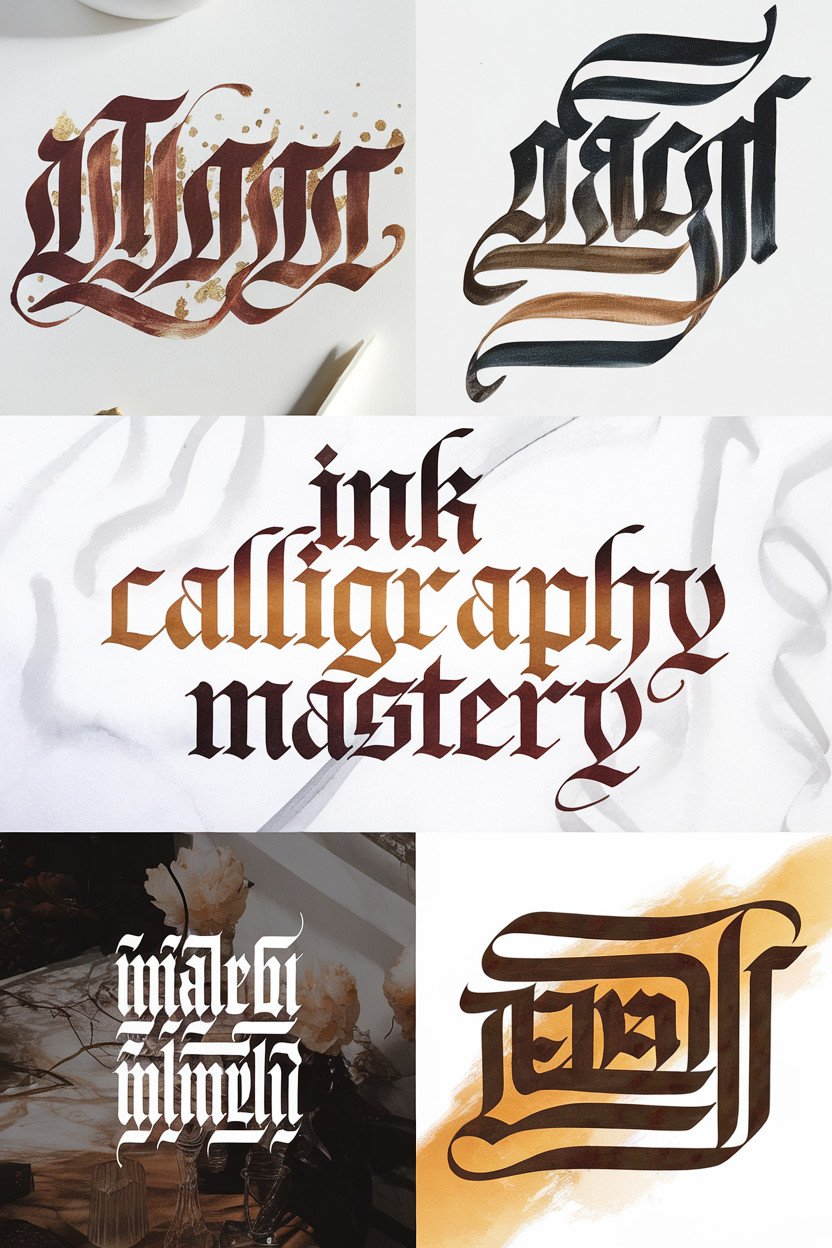If you’re looking to take your calligraphy skills to the next level, mastering calligraphy ink is a must. Whether you’re a beginner or an experienced calligrapher, understanding the intricacies of ink can make all the difference in the quality of your work.
In this article, we’ll explore the world of calligraphy ink and provide you with valuable insights and techniques to help you achieve ink perfection. From the best tools and supplies to ink mixing and troubleshooting, we’ll cover everything you need to know to master this elegant art form.
So, get ready to unleash your potential and take your calligraphy to new levels of excellence with calligraphy ink mastery.
Key Takeaways:
- Mastering calligraphy ink is essential for taking your calligraphy skills to the next level.
- Understanding the intricacies of ink can make all the difference in the quality of your work.
- In this article, we’ll provide valuable insights and techniques for achieving ink perfection.
- Topics we’ll cover include essential tools and supplies, ink mixing, troubleshooting, and more.
- By mastering calligraphy ink, you can unleash your potential and create beautiful, intricate lettering.
Unleash Your Potential with Calligraphy Ink Mastery
Are you ready to take your calligraphy to the next level? With the right calligraphy ink and techniques, you can unlock your full potential and create masterpieces that truly stand out. Here’s how to achieve ink mastery:
Invest in High-Quality Calligraphy Ink and Supplies
- Choose an ink that is smooth and flows consistently for optimal results.
- Consider the type of paper you will be using and select an ink that is compatible.
- Invest in a range of nibs and pens to experiment with different styles and scripts.
- Explore unique ink colors and textures to add depth and personality to your work.
By investing in high-quality ink supplies, you can ensure that your calligraphy work is both beautiful and long-lasting.
Practice and Refine Your Calligraphy Skills
Mastering calligraphy requires time and dedication, but the results are well worth it. Here are some tips to help you practice and refine your skills:
- Experiment with different ink pressures to create varying line thickness.
- Practice consistently to develop muscle memory and improve your hand movements.
- Study and imitate the work of expert calligraphers to learn from their techniques and styles.
With focused practice and a willingness to learn, you can achieve calligraphy ink mastery.
Explore Different Calligraphy Ink Techniques
There are countless calligraphy ink techniques to explore, each with its own unique style and flair. Here are a few examples:
- Copperplate Calligraphy: A classic style that uses delicate strokes and loops.
- Brush Calligraphy: A freestyle approach that uses flowing brush strokes.
- Gothic Calligraphy: A bold and dramatic style that features sharp angles and intricate details.
By experimenting with different techniques, you can discover which ones work best for you and develop your own personal style.
With these tips and techniques, you can unleash your potential and achieve ink mastery in no time. Start exploring the world of calligraphy ink today and discover the beauty and elegance of this timeless art form.
Essential Calligraphy Tools for Ink Perfection
Mastering calligraphy ink requires not only skill and practice but also the right tools and supplies. Here are the essential calligraphy tools and ink supplies you need to achieve ink perfection:
- Pens and nibs: Calligraphy pens and nibs come in various sizes and shapes. Choose the ones that suit your style and the script you want to practice. They come in different materials, such as metal, plastic, and wood.
- Ink bottles: High-quality ink is essential for smooth and consistent ink flow. Choose ink that is compatible with your pen and paper, and consider the color and consistency you want to achieve.
- Paper: High-quality paper that is smooth and thick enough to handle ink is essential for calligraphy. Choose paper that suits your script and the ink you are using.
- Ruler and pencil: A ruler and pencil are useful for creating guidelines and spacing your letters evenly.
- Eraser and white-out: Mistakes happen, so having an eraser and white-out on hand can be helpful when working on your calligraphy.
- Cleaning supplies: Keeping your pens and nibs clean and free of ink residue is crucial for prolonging their lifespan. Consider investing in a cleaning kit that includes a cleaning solution and brush.
Investing in high-quality calligraphy tools and ink supplies may seem like a splurge, but they will make a significant difference in the quality of your work and your overall calligraphy experience.
Be sure to test out different tools and supplies to find the ones that work best for you and your preferred calligraphy style. With the right tools and a lot of practice, you’ll be well on your way to achieving ink perfection.
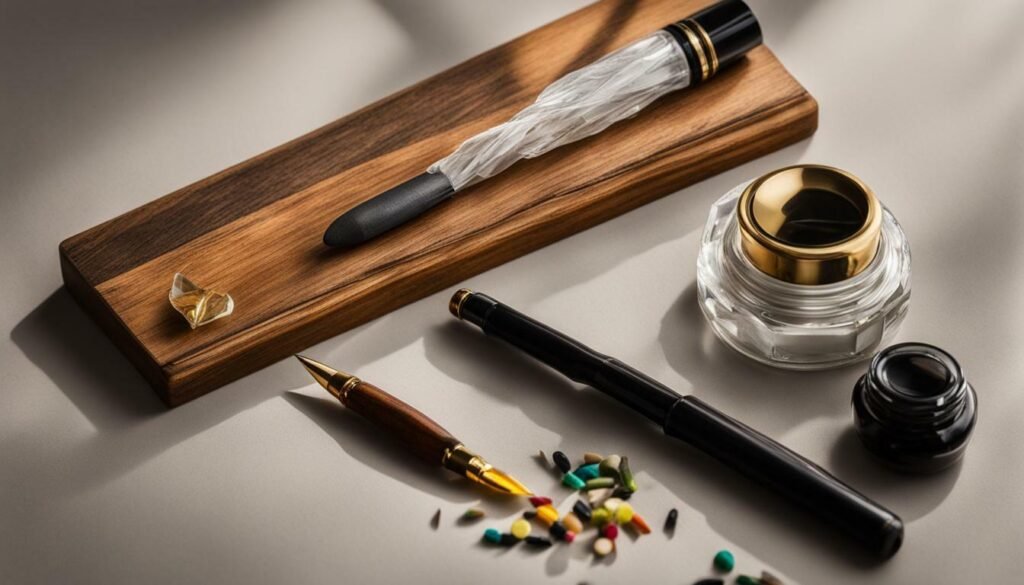
If you want to take your calligraphy skills to the next level, it’s essential to explore different calligraphy ink techniques. Here are some tips to help you practice and refine your skills:
- Start with the basics: Before attempting more complex techniques, ensure that you have a solid foundation in basic letterforms and strokes. Practice regularly to build muscle memory and develop your skills.
- Experiment with different nibs: Different nibs create different line weights and styles, so it’s essential to experiment with different types of nibs to find the ones that suit your personal style best.
- Try different scripts and styles: Calligraphy offers a vast range of scripts and styles to explore, including Gothic, Italic, and Copperplate. Experiment with different styles to find the ones that resonate with you.
- Use guide sheets: Guide sheets can help you maintain consistent sizing and spacing of letters and strokes, making it easier to create balanced and visually appealing calligraphy.
- Practice regularly: Like any skill, calligraphy requires regular practice to improve. Dedicate time each day to practice and refine your technique.
By exploring different calligraphy ink techniques, you can expand your skills and create beautiful, intricate lettering that captures the beauty and elegance of this timeless art form.
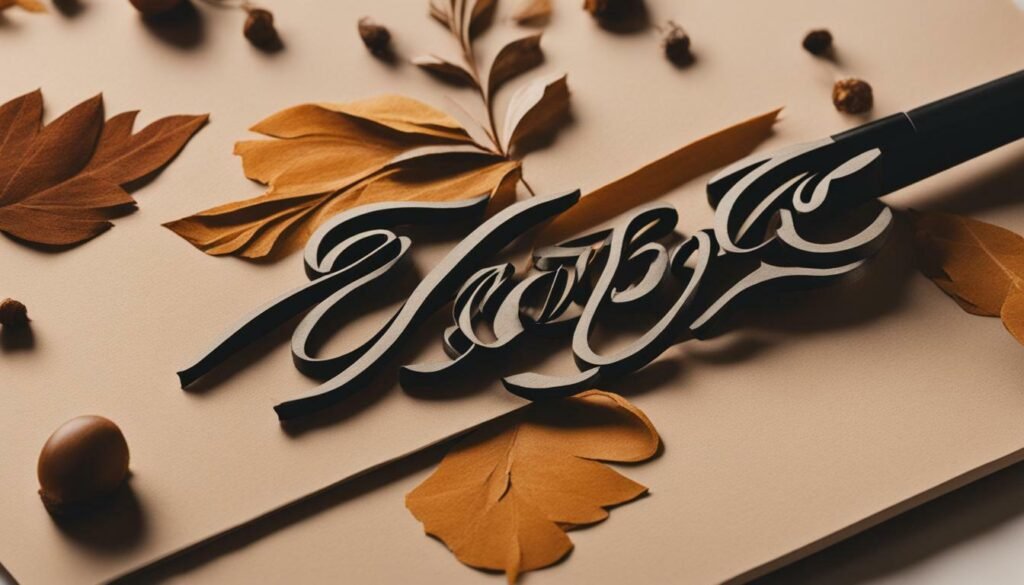
If you’re struggling with a particular technique, take a break and come back to it later. Often, a fresh perspective can help you overcome obstacles and refine your skills.
Mastering Ink Flow and Consistency
Smooth and consistent ink flow is critical to achieving beautiful calligraphy. Mastering this skill takes practice and patience, but with the right techniques and tools, you can achieve the perfect flow and consistency. Here are some tips to get you started:
- Adjust your pen pressure: Too much pressure can cause the ink to flood the paper, while too little can result in faint or broken lines. Practice applying the right amount of pressure for the desired effect.
- Choose the right ink consistency: Different inks have different viscosities, and the right consistency depends on your pen, paper, and desired effect. Experiment with different inks to find the one that works best for you.
- Practice, practice, practice: Consistency comes with practice. Use drills and exercises to improve your control and precision.
When working with calligraphy ink, it is important to be patient and careful. Rushing can lead to mistakes and inconsistencies. Take your time and enjoy the process of creating beautiful lettering.
Remember, the right tools and supplies can also make a big difference in achieving consistent ink flow. Quality pens, nibs, and ink bottles can help you achieve the perfect result.
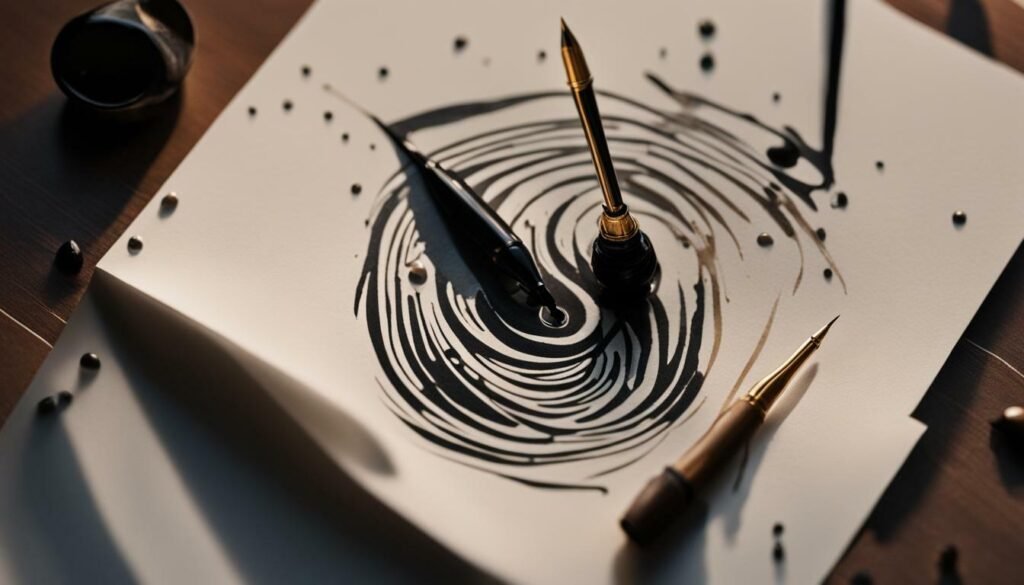
Try experimenting with different ink colors to add depth and interest to your calligraphy. Mix in a touch of gold or silver ink for an elegant touch, or try a bold color like red or blue for a pop of personality.
As with any skill, mastering ink flow and consistency takes time and dedication. But with practice and the right tools, you can achieve the perfect flow and create beautiful calligraphy that truly stands out.
Choosing the Right Ink for Different Surfaces
When it comes to calligraphy ink, choosing the right type for the surface you’re working on is crucial. Here are some tips to help you select the best ink for your project:
- For paper surfaces: traditional water-based inks work well. They tend to dry quickly and don’t smudge easily.
- For fabric surfaces: pigmented inks are best, as they won’t fade or bleed. Make sure to heat-set the ink after application to ensure longevity.
- For non-paper/non-fabric surfaces: acrylic-based inks are ideal. They adhere well to surfaces like wood, metal, and plastic, and provide a rich, opaque finish.
Keep in mind that not all inks are compatible with every surface, so it’s essential to test the ink on a small area first.
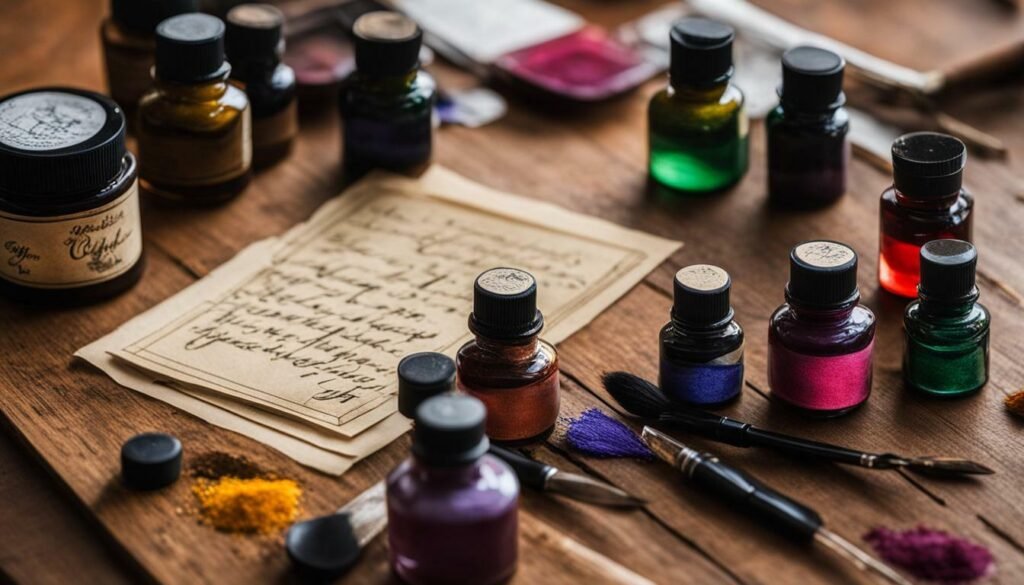
Another factor to consider is the color of the ink. Different colors can have different effects on different surfaces. For example, metallic inks are great for adding a touch of glamour to paper but may not show up as well on darker fabrics.
Choosing the Right Ink for Different Calligraphy Styles
When choosing an ink for a particular calligraphy style or script, keep in mind the following:
- For traditional scripts, black or dark-colored ink is usually preferred.
- For modern styles, consider experimenting with different colors and shades to add dimension and flair to your work.
- If you’re working on a project that requires multiple colors, make sure the inks are compatible and won’t bleed into each other.
By taking the time to choose the right ink for your project, you can ensure that your calligraphy work is not only beautiful but also long-lasting and durable.
Troubleshooting Common Ink Issues
Working with calligraphy ink can be a rewarding experience, but it can also pose some challenges. Here are some common ink issues that may arise, along with solutions to address them:
- Smudging: If you find that your ink is smudging, it could be due to excess ink on your nib or a problem with the paper. Try cleaning your nib and using a different type of paper, such as a thicker or smoother surface.
- Bleeding: If your ink is bleeding and creating uneven lines, it may be due to using an inappropriate type of paper or applying too much pressure. Try using a more absorbent paper or adjusting your pressure to achieve better control.
- Inconsistency: Inconsistent ink flow can be frustrating and result in uneven lines. This could be due to incorrect nib placement or an issue with the ink consistency. Try adjusting the angle of your nib or experimenting with different ink brands to find one that suits your needs.
By troubleshooting these common issues, you can achieve a smoother and more consistent calligraphy experience.
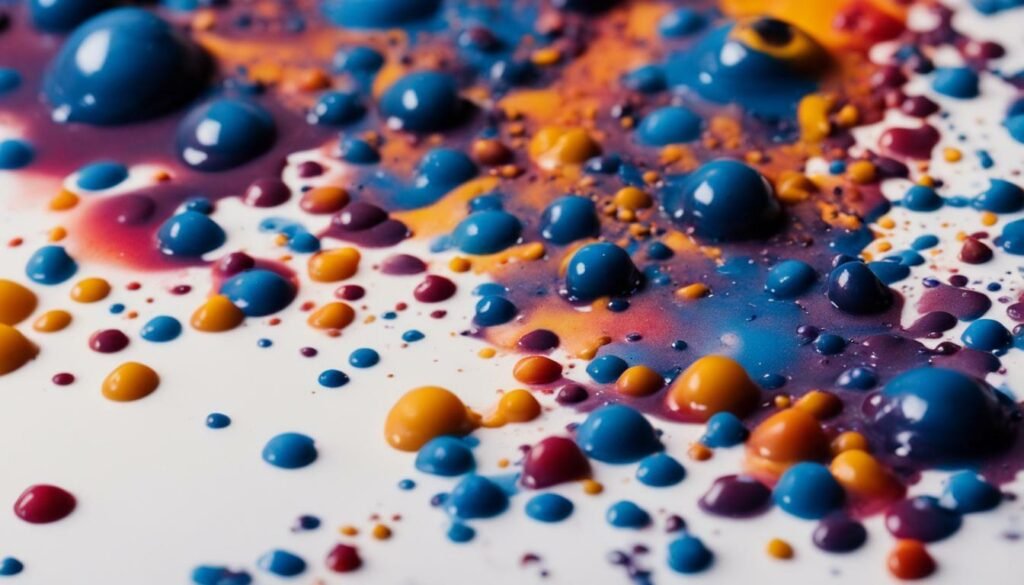
To avoid common ink issues and improve your calligraphy skills, here are some additional tips to keep in mind:
- Practice regularly: Consistent practice is key to mastering calligraphy ink. Set aside time each day to practice and experiment with new techniques.
- Use high-quality ink: Investing in high-quality ink can make a significant difference in your calligraphy work. Look for brands that offer a wide range of colors and consistencies.
- Experiment with different nibs: Different nibs can produce different effects, so it’s worth exploring a range of options to find the ones that work best for your style.
- Keep your workspace clean: A clean workspace can help prevent ink smudging and other issues. Keep your nibs, ink bottles, and other tools clean and organized.
With these tips and solutions in mind, you can confidently tackle any challenges that may arise when working with calligraphy ink.
Enhancing Your Calligraphy with Ink Mixing
If you’re looking to add a personal touch to your calligraphy, ink mixing is a must-try technique. By blending different ink colors, you can create unique shades and effects that will make your calligraphy stand out.
Here are some tips to help you master ink mixing:
- Start with small amounts of ink until you achieve your desired color.
- Use a palette or non-absorbent surface to mix your inks.
- Experiment with different ratios to achieve a variety of shades.
Remember, ink mixing requires practice and patience, so keep experimenting until you find the perfect blend.
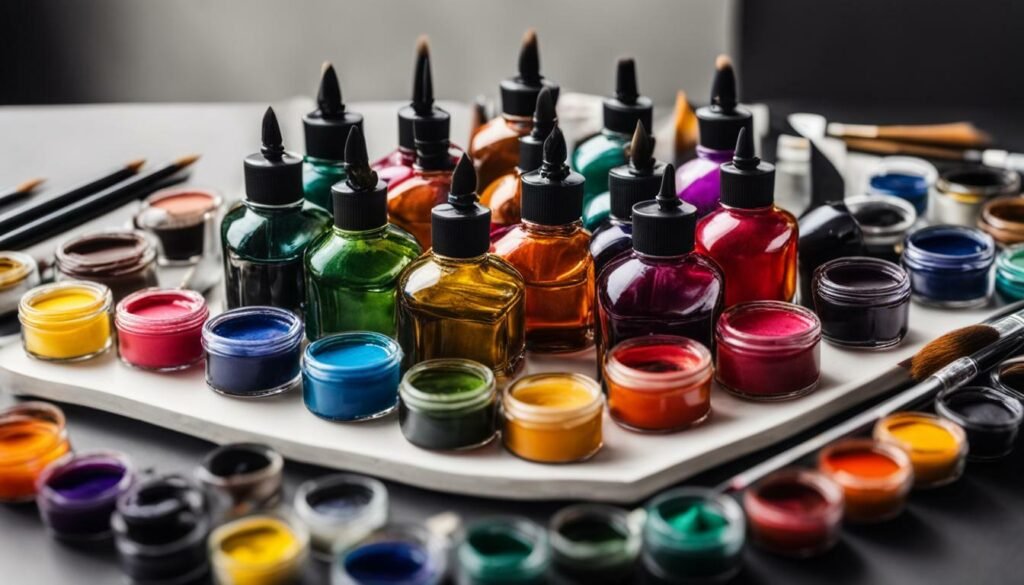
Once you’ve mastered the basics of calligraphy ink, it’s time to explore different techniques to enhance your skills:
- Practice your strokes and lines to achieve consistency.
- Experiment with different nibs to achieve varying line widths.
- Find the right ink consistency for your preferred calligraphy style.
By practicing these techniques, you’ll be able to create beautiful and intricate calligraphy that showcases your ink mastery.
Benefits of Ink Mixing
Ink mixing can bring a unique and personal touch to your calligraphy work. Here are some of the benefits of mastering this technique:
- Create customized shades that reflect your individual style.
- Add depth and dimension to your calligraphy work.
- Showcase your creativity and expertise to clients and customers.
By incorporating ink mixing into your calligraphy practice, you can elevate your work to new levels of artistry and excellence.
Expanding Your Calligraphy Toolkit with Specialty Inks
If you’re looking to take your calligraphy to the next level, consider exploring specialty inks. From metallic and shimmering inks to invisible and erasable options, these unique inks can add versatility and creativity to your work.
Some popular specialty calligraphy inks include:
- Metallic inks: Add some sparkle to your calligraphy with metallic inks in gold, silver, copper, and more.
- Shimmering inks: These inks contain mica particles that create a subtle shimmer effect.
- Invisible inks: These inks only appear under certain conditions, such as with a black light or heat.
- Erasable inks: Mistakes can easily be corrected with erasable inks, which can be wiped away with a damp cloth or eraser.
When choosing specialty inks, consider the effect you want to achieve and the surface you will be using it on. Some inks may work better on certain materials, so test them out before committing to a project.
As with any calligraphy ink, it’s important to use high-quality supplies to achieve the best results. Look for inks that are specifically designed for calligraphy and are compatible with your pens and nibs. And don’t forget to properly store your inks to ensure their longevity.
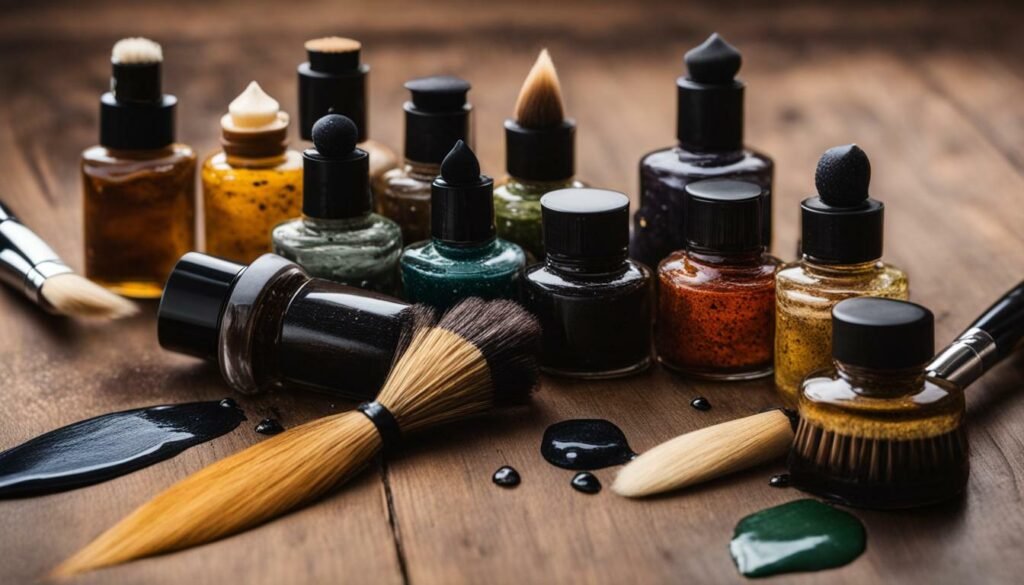
By incorporating specialty inks into your calligraphy toolkit, you can add a unique touch to your work and expand your creative possibilities. So why not experiment with these exciting options and see where they take you?
Maintaining and Preserving Your Calligraphy Ink Supplies
As you continue on your journey to calligraphy ink mastery, it’s important to care for and maintain your ink supplies to ensure their longevity. Here are some valuable tips to help you preserve your calligraphy tools and ink supplies:
- Store ink bottles and pens in a cool, dry place to prevent evaporation and drying out.
- Clean pens and nibs regularly to avoid blockages and build-up of dried ink. Use a gentle detergent or specialized pen cleaner.
- Use a well-aerated, light-proof container to store ink bottles and prevent exposure to direct sunlight.
- Avoid shaking ink bottles vigorously, as this can introduce air bubbles and cause inconsistency in ink flow.
- Use distilled water to thin out overly thick or viscous ink, rather than tap water.
By following these tips, you can keep your calligraphy ink supplies in top condition and enjoy many years of beautiful and flawless ink work.
Bonus Tip: Properly dispose of ink waste and contaminated materials
As with any artistic pursuit, calligraphy ink work can generate waste and contaminated materials that need to be properly managed and disposed of. To reduce your environmental impact and ensure that you handle hazardous materials safely, make sure to follow these guidelines:
- Dispose of used ink bottles and contaminated materials in accordance with local recycling guidelines and regulations.
- Avoid pouring ink waste down drains or into water sources, as this can lead to pollution and harm to aquatic life. Instead, consider using a chemical waste disposal service or a hazardous waste collection center.
- Handle ink and ink materials with care to avoid skin or eye contact. Always wear protective gloves and goggles when handling hazardous materials.
By taking these extra steps to care for your calligraphy ink supplies and responsibly manage waste, you can enjoy your craft with peace of mind and take pride in your eco-friendly approach.
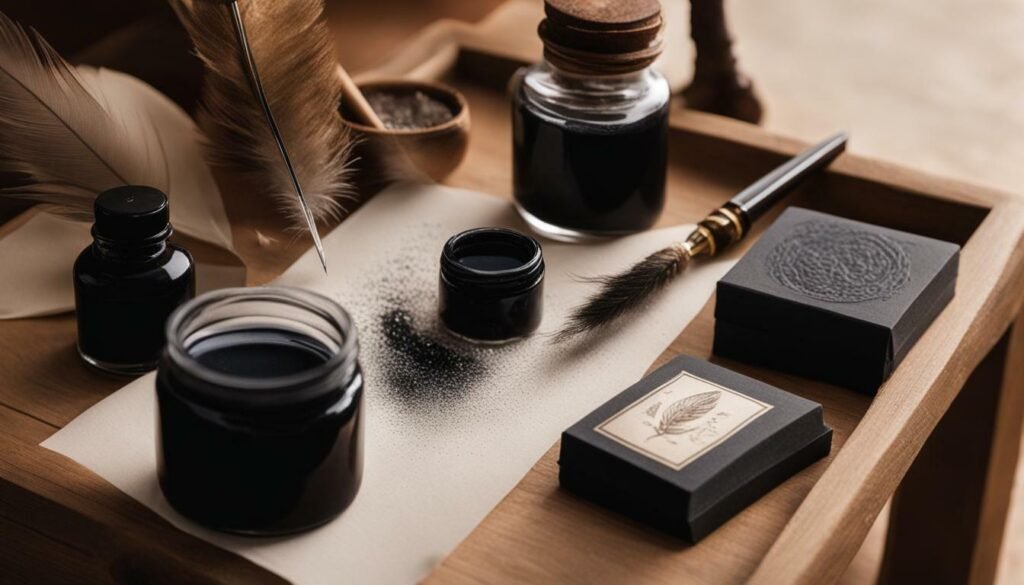
After dedicating time and effort to mastering calligraphy ink, it’s only natural to want to share your work and showcase your skills. Here are some ways to do just that:
- Create personalized pieces for friends and family
- Illuminated manuscripts
- Wedding invitations or other formal events
- Design logos, emblems, or typography
- Develop a personal brand by showcasing your work on social media or building a portfolio website
By creating pieces for others, you can also fine-tune your calligraphy skills and practice your ink techniques. You can offer your services as a calligrapher for special events or sell your work online or at local art fairs.
Another way to gain exposure and improve your calligraphy skills is by participating in calligraphy ink challenges online. These challenges often have specific themes or prompts and can provide an opportunity to connect with other calligraphers and receive constructive feedback.
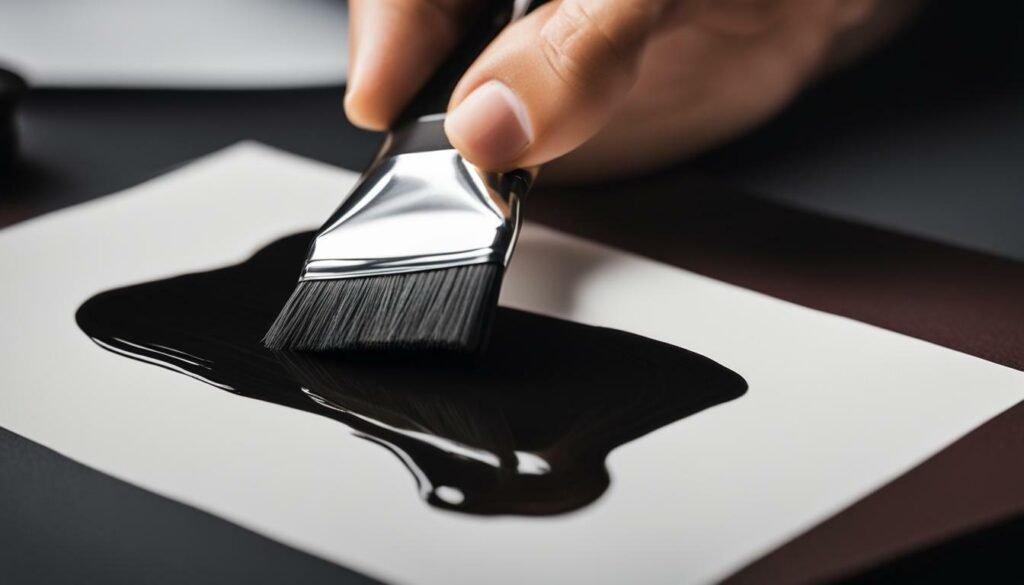
Regardless of how you choose to showcase your calligraphy ink mastery, keep in mind that it’s important to continue practicing and refining your skills. The more you practice, the more confident and skilled you will become in using calligraphy ink to create stunning pieces of art.
Joining Calligraphy Ink Mastery Communities and Workshops
Connect with a community of fellow calligraphy enthusiasts and expand your knowledge by joining online communities and attending workshops. Here are some ways to help you make the most of these opportunities:
- Explore online forums and social media groups focused on calligraphy techniques and calligraphy skills. Engage with other members by sharing your work, asking for feedback, and participating in discussions.
- Look for calligraphy workshops in your area or online. These workshops are often led by experienced calligraphers and can provide valuable insights and hands-on experience with new techniques.
- Attend calligraphy conferences and events to meet other calligraphy enthusiasts, learn from experts in the field, and discover new products and techniques.
Joining a calligraphy community or attending a workshop can help you:
- Get feedback on your work. Sharing your work with a community of fellow calligraphers can help you identify areas for improvement and receive constructive feedback and support.
- Learn from others. By attending workshops or participating in online communities, you can learn from experienced calligraphers and gain insights into new techniques and approaches.
- Stay motivated. Connecting with others who share your passion for calligraphy can help keep you inspired and motivated to continue improving your calligraphy skills.
Overall, joining calligraphy ink mastery communities and workshops is an excellent way to connect with others who share your passion for calligraphy, learn new techniques, and continue to improve your calligraphy skills.

Calligraphy ink has a rich history dating back to ancient times when it was used for religious texts and manuscripts. It has since evolved into a form of artistic expression across various cultures, including China, Japan, and the Middle East. Calligraphy ink is more than just a writing tool; it is a way to connect with history and tradition through the beauty of the written word.
Calligraphy ink has had a significant impact on the development of calligraphy techniques, influencing the choice of tools, styles, and scripts. The development of various inks also played a key role in calligraphy’s evolution, from the traditional black ink used in East Asian calligraphy to the colorful inks used in Western calligraphy. The cultural and historical significance of calligraphy ink continues to inspire artists today to create unique and beautiful works.
- Calligraphy ink is deeply connected to the artistic and cultural identity of many countries, including China, Japan, and Islamic countries.
- The development and evolution of calligraphy ink has played a crucial role in the development of calligraphy techniques and styles.
- Calligraphy ink has been used to create some of the most beautiful and iconic works of art in history, from religious texts to masterpieces of calligraphy.
- Today, calligraphy ink continues to be a vital tool for artists and writers to express their creativity and connect with the rich history and cultural significance of this timeless art form.
Whether you are a seasoned calligrapher or just starting, understanding the cultural and historical significance of calligraphy ink can deepen your appreciation and mastery of this art form. Take the time to explore the different types of ink, their history, and how they are used in various cultures to enhance your understanding and appreciation of this beautiful craft.
By appreciating the cultural and historical significance of calligraphy ink, you can gain a greater understanding and appreciation for this timeless art form. So why not delve deeper into the history and cultural significance of calligraphy ink today?
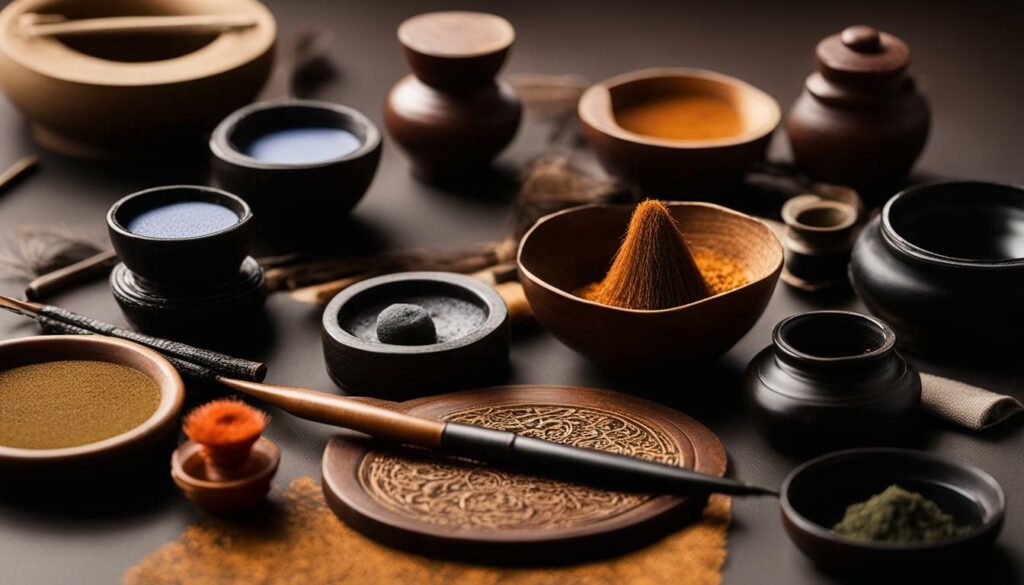
The Future of Calligraphy Ink Mastery
Calligraphy ink has come a long way since its humble beginnings, and as technology advances, new trends and techniques are being developed to provide even more creative possibilities. Here are some of the latest innovations in calligraphy ink mastery that you should keep an eye on:
Digital Calligraphy
With the increasing use of technology in our daily lives, it’s no surprise that calligraphy is also taking a digital turn. Digital calligraphy allows you to create beautiful lettering using special software and equipment, providing precise strokes and customizable fonts.
You can use a stylus or pen tablet to draw directly on a screen and see your calligraphy come to life in real-time. Some programs even allow you to create calligraphy on your mobile device, giving you the freedom to practice and create on-the-go.
Colored Inks
While traditional calligraphy ink is usually black, colored inks have become increasingly popular in recent years. These inks come in a wide range of hues, from bright and vibrant to subtle and understated.
With the right techniques, you can use different colors to create stunning effects and add depth and dimension to your calligraphy. Some artists even mix and blend different colors to create their own unique shades.
Special Effects Ink
If you’re looking to take your calligraphy to the next level, consider experimenting with special effects ink. These inks come in a range of formulations, from metallic and shimmering to invisible and erasable.
You can use these inks to create dramatic and eye-catching effects that will make your calligraphy stand out. For example, metallic inks can add a touch of glamour and sophistication to your work, while invisible and erasable inks can be used for playful and whimsical creations.
Sustainable Inks
With an increasing focus on sustainability and eco-friendliness, many calligraphy ink manufacturers are beginning to develop inks that are made with natural and biodegradable ingredients.
These inks are kinder to the environment and can help reduce your carbon footprint, while still providing high-quality results. They’re also a great option for artists who want to create with a clear conscience.
As calligraphy ink continues to evolve, there’s no limit to the possibilities it can offer. Whether you prefer traditional ink or cutting-edge technology, the only limit is your imagination.
FAQ
Q: What is calligraphy ink?
A: Calligraphy ink is a specialized type of ink used for creating beautiful, elegant lettering. It is designed to flow smoothly and provide rich, pigmented color.
Q: Can I use regular ink for calligraphy?
A: While it is possible to use regular ink for calligraphy, it is recommended to use specifically formulated calligraphy ink. Regular ink may not have the same flow and consistency needed for creating precise lettering.
Q: What are the essential tools for calligraphy ink mastery?
A: The essential tools for calligraphy ink mastery include a calligraphy pen or nib, high-quality ink, paper or other suitable surfaces, and a pen holder or grip to hold the pen or nib securely.
Q: How can I improve my calligraphy ink technique?
A: Practice is key to improving your calligraphy ink technique. Regularly dedicate time to practicing different letterforms and experimenting with various techniques, such as adjusting pen pressure and ink consistency.
Q: How can I achieve consistent ink flow in my calligraphy?
A: To achieve consistent ink flow in calligraphy, it is important to adjust your pen pressure and hold the pen or nib at the correct angle. Additionally, choosing an ink consistency that suits your writing style can help maintain a smooth flow.
Q: Can I use calligraphy ink on different surfaces?
A: Yes, calligraphy ink can be used on various surfaces, including paper, fabric, wood, and more. However, it is important to choose the right type of ink that suits the surface you are working on to achieve the desired effect.
Q: What should I do if my ink smudges or bleeds?
A: To prevent smudging or bleeding, allow sufficient drying time between strokes and layers. You can also try using a blotting paper or a light touch to minimize the chances of ink spreading on the paper.
Q: How can I create unique ink shades for my calligraphy?
A: Experiment with ink mixing techniques by blending different colors to create unique shades. Start by mixing small amounts of ink until you achieve the desired hue, and remember to record your formulas for future reference.
Q: Are there specialty inks for calligraphy?
A: Yes, there are specialty inks available for calligraphy, such as metallic, shimmering, invisible, and erasable inks. These unique inks can add flair and creativity to your calligraphy work.
Q: How do I maintain and preserve my calligraphy ink supplies?
A: Proper care and maintenance of your calligraphy ink supplies are important for their longevity. Store your ink bottles upright, clean your pens and nibs regularly, and protect them from excessive heat or moisture.
Q: How can I showcase my calligraphy ink mastery?
A: There are many ways to showcase your calligraphy ink mastery, including creating personalized artworks, offering calligraphy services, participating in exhibitions, and sharing your work on social media platforms.
Q: Where can I connect with other calligraphy enthusiasts and learn more?
A: You can connect with other calligraphy enthusiasts and expand your knowledge by joining online communities, participating in workshops, attending calligraphy conferences, and engaging with professional calligraphers on social media.
Q: What is the history and cultural significance of calligraphy ink?
A: Calligraphy ink has a rich history and cultural significance in various cultures around the world. It has been used for centuries as a form of artistic expression, communication, and preserving cultural heritage.
Q: What can I expect from the future of calligraphy ink mastery?
A: The future of calligraphy ink mastery is constantly evolving. With advancements in technology, digital calligraphy is gaining popularity. Additionally, innovative ink formulations and techniques continue to emerge, offering new possibilities for calligraphers to explore.
